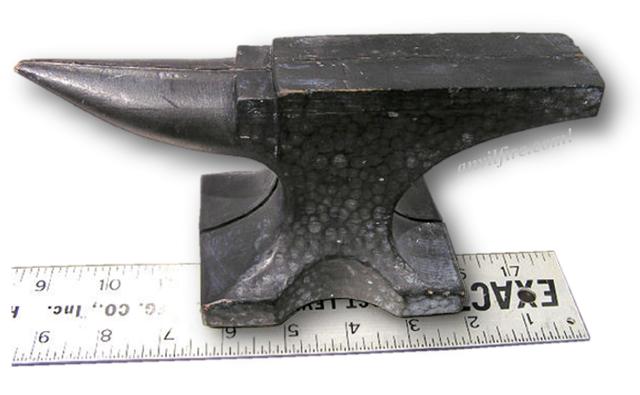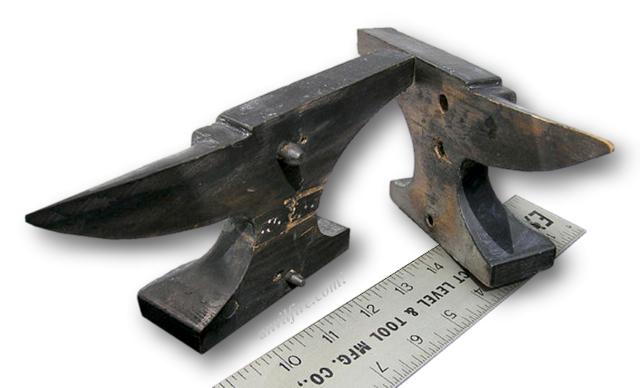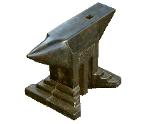Photos from anvilfire collection. Processing by by Jock Dempsey
This is what is known as a "split" or "loose" pattern.
Making the sand mold is up to the skill of the foundryman.
The reason it is split in two is so that one half can be set on a flat surface surrounded by a flask and sand rammed up around it.
The mold is turned over and the second half of the mold with the dowels is inserted into the first,
the second half of the flask installed, then sand rammed up to make the second half of the mold.
This pattern is made of wood as most old patterns and many new.
I am told it has been repaired several times and shows much use.
In normal use patterns often see considerable abuse from extracting screws and rapping pins.
It was estimated to make about an 8 to 10 pound anvil.
This pattern has no core print for a square hardie hole.
It may have one in an earlier life but this version does not.
So it was probably last being used make junk cast iron or "decorative" anvils.

Many old patterns are prized as works of art.
They are an engineered sculpture.
They must produce the object faithfully, have proper draft (taper) so they can be pulled from the sand, and be made of stable durable material.
The wood is mahogany, Western cedar or possibly clear pine.
Dimensions:
Length: ~10" (250 mm)
Weight: n/a
Pattern and Mold Making iForge demos and links.






 Anvil Collections Gallery Index
Anvil Collections Gallery Index

städ, incus, aambeeld, batente